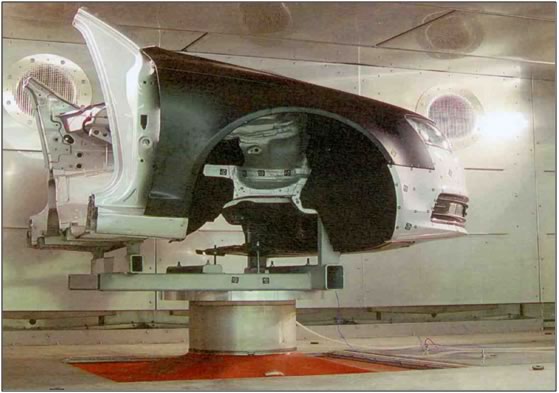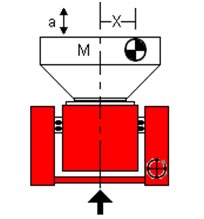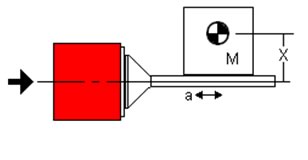In the recent past, we have been asked by several customers, distributors, and employees, why the cross axial stiffness numbers for SignalForce shakers appear to be smaller than the numbers published by some competitors. There is more to this aspect of a shaker than a mere number and it would be good to be skeptical when looking at numbers that may appear too good on paper. The discussion below should help develop a better appreciation for this subject.
Users want to know the cross axial stiffness of a shaker’s suspension to verify if they can place an unusually large, or off center, payload on the shaker. Whether the load is centered on the table is not the entire story either, because a load that overhangs the armature, though with a CG that is at the center, may during vibration exhibit strong unbalanced forces due to resonance. The height of the CG above the table may amplify such of off axis forces. In such situations some form of guidance would be highly desirable. Users who are new to vibration testing may not appreciate the dynamic effects and it is best that the sales process includes a review of the user’s application so that the correct armature guidance and if necessary, load support are included in the recommended solution.
It is difficult to assess the true resistance offered by the shaker to cross axis forces because it is often the moment that has to be restrained. The resistance offered well below the plane of the shaker table is less effective counteracting off axis forces developed by the test item well above the shaker table. Users should be encouraged to look closer at their test situation and discuss the application in detail with our applications engineers so that they avoid making a costly mistake by looking up a competitor’s often meaningless specification.
Our approach, of offering a more complete test system, is designed to provide a comprehensive solution that takes account of all aspects of the user’s application. We offer a distinctive competency in the vibration test and measurement application to claim our good citizenship in the test and measurement community. Our staff of talented professionals offer many years of combined experience and are well equipped to work with our customers to select the proper Vibration Test System to fit their specific applications. We do not take the view that our products are commodities that can simply be evaluated by numbers on a data sheet or the prices at which they are offered.
Below see an example of a test article that should be mounted on a guided head expander:

The CG is right through the center of the table but the substantial masses that overhang the table are, well above the base and clearly likely to have their own modes of vibration.
Understanding Moments:
Overturning Moments – Vertical
- Guided Head Expanders are required when the DUT has a CG that is off center from the shaker line of motion or has the potential for significant resonance of masses that overhang the armature as portrayed above.
- Guided Head Expanders are also required when the head expander is more than 2.5x the armature diameter, (example: 48” head expander with 12” diameter armature).

Overturning Moments – Horizontal
- Horizontal (slip table) testing is often a concern in vibration testing because the CG is always above the bearing line of the slip table.
- Determine the guidance system by the following equation and compare to bearing or table specifications:
a = acceleration of test (pk) M = total moving mass
F = max system force (pk)
X = distance off center line


